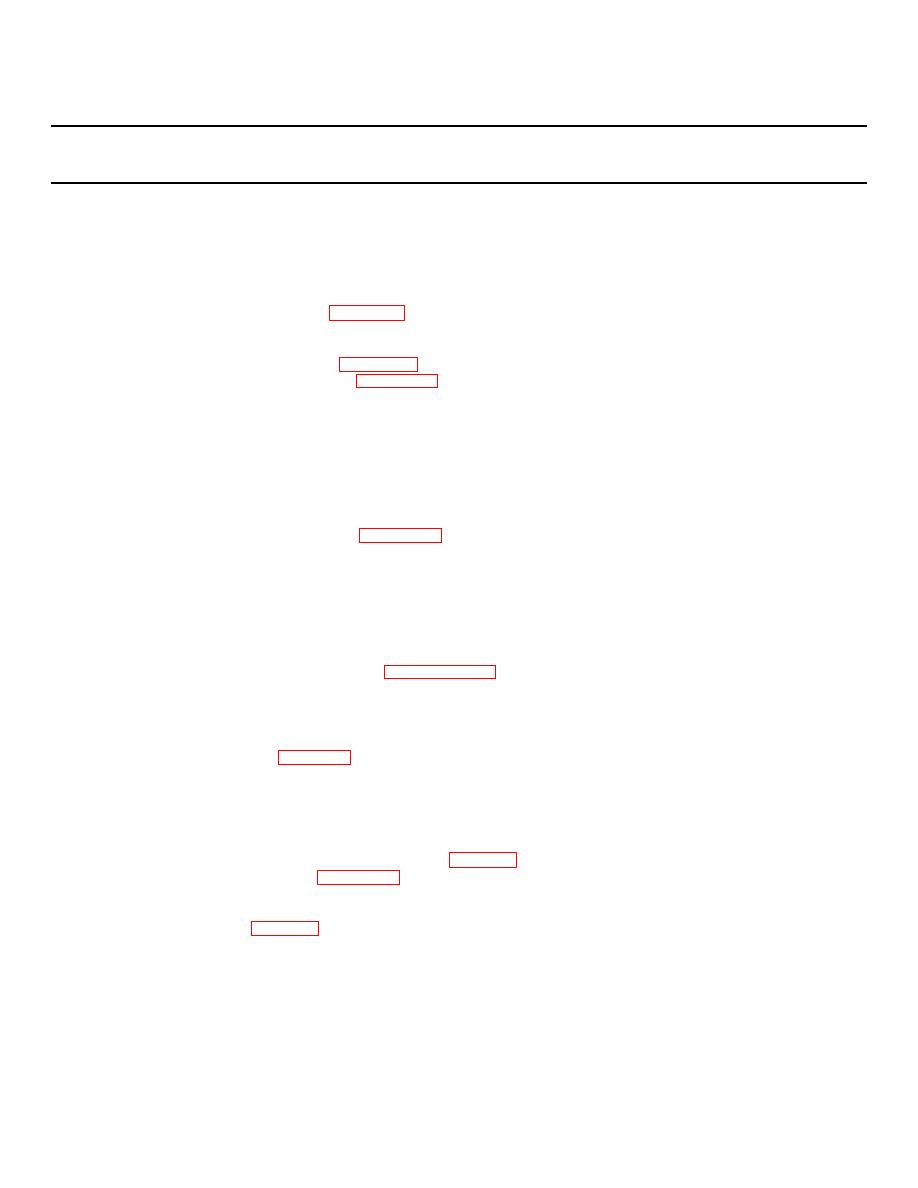 |
|||
|
|
|||
|
|
|||
| ||||||||||
|
|
 TM 55-1905-223-24-7
Table 2-2. Troubleshooting
Malfunction
Test or Inspection
Corrective Action
1. Low pressure gauge indicates vacuum.
STEP 1.
Check for closed feedwater inlet valve.
Open feedwater inlet valve.
STEP 2..
Check for clogged sediment strainer.
Clean sediment strainer (para. 2-11).
STEP 3.
Check for clogged cartridge filter.
a.
Clean or change cartridge (para. 2-11).
b.
Replace high pressure pump (para. 2-18).
2. Low pressure gauge indicates 0 psi
STEP 1.
Check for air leak in system.
Repair air leaks.
STEP 2.
Check steps 1, 2 and 3 in malfunction #1.
a.
Use corrective actions in malfunction #1.
b.
Replace high pressure pump (para. 2-18).
3. No high pressure (low pressure gauge reads positive pressure).
STEP 1.
Check for open high pressure bypass valve on front dash.
Close valve.
STEP 2.
Check high pressure regulator valve.
Replace high pressure regulator valve (paragraph 2-26).
4. Water quality monitor QUALITY LOW red lamp lit.
STEP 1.
Check for high salinity.
a.
Clean RO element (Table 2-1, Item 6).
b.
Check brine flowmeter for proper flow.
5. Product flowmeter indicates LOW.
STEP 1.
Check feedwater temperature.
a.
Correct flow rate for temperature difference (Table 2-1, Item 8).
b.
Replace solenoid valve (para. 2-28).
STEP 2.
Check for fouled membranes if water temperature is OK.
Clean membranes (Table 2-1, Item 6).
2-14
|
|
Privacy Statement - Press Release - Copyright Information. - Contact Us |